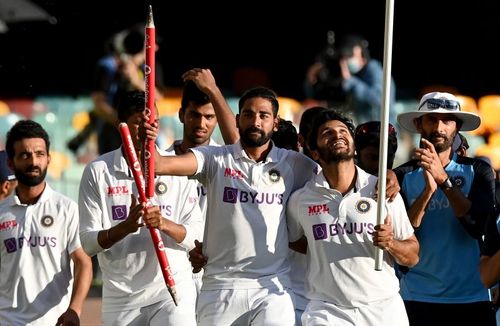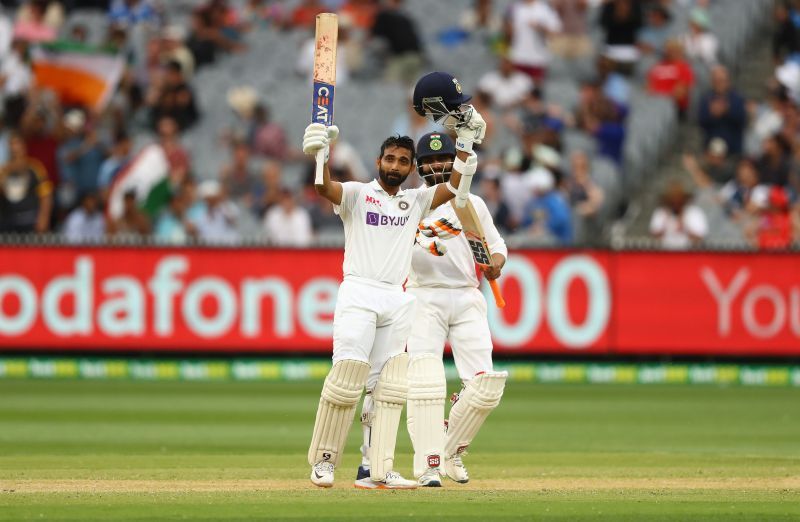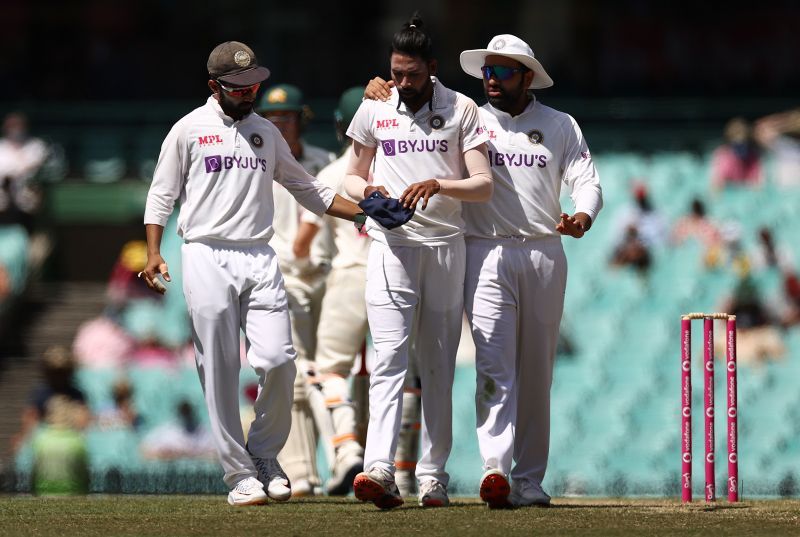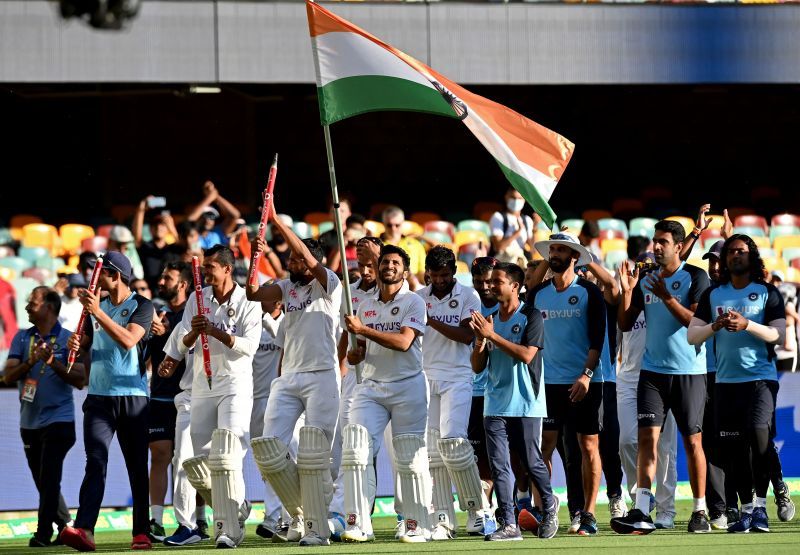
No chinks, only Jinks in the armour: Ajinkya Rahane’s journey from captain to leader

The procession during India’s 36 all out in the second innings in Adelaide also included Ajinkya Rahane. The four-ball duck earned him a tad more flak than the rest of his teammates. Why? Because he was culpable of running out Virat Kohli for 74 in the first innings and denying the Indian captain a shot at his solitary hundred of the year.
The apparent gulf in quality between the two sides was showcased by the Adelaide skirmish. To make things worse, Virat Kohli flying back to Mumbai to attend his first child's birth meant India had an even bigger void to fill in terms of their batting and leadership.
Quite naturally, vice-captain Ajinkya Rahane was given the top job for the remaining three Tests to help India earn some salvation. The abuse in Adelaide turned to mockery in Melbourne as India – under stand-in skipper Ajinkya Rahane – went into the Boxing Day Test, with a defeat looming.
Can the man on the street be blamed for not having enough faith in Ajinkya Rahane’s leadership? After all, the team management didn’t show any when the designated vice-captain was dropped for the opening two Tests during India’s tour of South Africa in 2018.
His IPL numbers are modest as well. Leading the Rising Pune Supergiant and the Rajasthan Royals, he has finished on the winning side in only 9 of 25 matches, clocking a win percentage of 36. Notably, he was even sacked from captaincy mid-season in IPL 2019 and then traded to the Delhi Capitals in the next transfer window.
But people tend to forget that Ajinkya Rahane led India to victory in both Tests where he was captain, prior to the 2020-21 Border-Gavaskar Trophy. His first moment of glory came in Dharamsala when India beat Steve Smith’s Australia by eight wickets to win the 2017 Border-Gavaskar Trophy 2-1. The next one came on a historic occasion when India humbled Afghanistan in their maiden Test, in Bengaluru, in 2018.
Ajinkya Rahane marvels in Melbourne

Cut to Melbourne Cricket Ground on December 26, 2020. Steve Smith, India’s nemesis, registered his first duck in Test cricket since 2016 – caught at leg slip off Ravichandran Ashwin. Marnus Labuschagne, the leading run-getter in the ongoing World Test Championship, was caught at leg gully off debutant Mohammed Siraj.
While the bowlers filled up their wicket columns, it was Ajinkya Rahane who attracted the plaudits from pundits and fans alike. Firstly, for devising the plan to bowl at the stumps and setting those leg-side traps accordingly. Bundled out for a measly 195, Australia were taken aback by India’s new strategy and new-found zest.
Then came India’s turn to capitalise with the bat. Their hero? Ajinkya Rahane, again. With the tourists precariously placed at 173 for five, Rahane forged a 121-run sixth-wicket stand with Ravindra Jadeja en route a 223-ball 112.
In addition to the 12 boundaries and a zillion blocks, his second hundred at the iconic venue featured symbols of intent, grit, resilience, defiance, fortitude – all of which India’s players would go on to showcase later in the series.
Indeed, it was Ajinkya Rahane’s 12th Test ton that fuelled India’s fightback and instilled a much-needed sense of self-belief in the team, especially after the morale-sapping loss at the Adelaide Oval. Moreover, he himself hit the winning runs on the morning of Day 5 to level the series 1-1.
India ended the previous year on a high but were jolted early in the new one. Just when there were talks of KL Rahul being slotted in the middle-order, the wicketkeeper-batsman sprained his left wrist while batting in the nets.
Mind you, speedster Umesh Yadav had already hobbled off at the MCG with a calf muscle injury after bowling just 3.3 overs in Australia’s second essay. This added to losing Mohammed Shami to a nasty delivery from Pat Cummins in the first Test.
Ajinkya Rahane: India’s shield in Sydney

It was the Sydney Cricket Ground, Steve Smith’s home ground. And both he and his clone, in Marnus Labuschagne, had seemingly gotten to grips with India’s master-key to the Melbourne victory. There were the odd shuffle across the stumps, but the ball was going off the middle of the bat and racing to the square-leg and mid-wicket fences.
The duo helped the hosts pile on 338. And when it was India’s turn to bat, all eyes were once again on Ajinkya Rahane. But the Indian captain couldn’t live up to expectations this time around, chopping Pat Cummins onto the stumps for a resolute 70-ball 22.
India conceded a lead of 94 runs, but Ajinkya Rahane ensured the Indian shoulders didn’t drop. Yes, there were catches put down – some of them sitters. Yes, Smith and Labuschagne strung together their second 100-run partnership of the match. But Ajinkya Rahane, with a smile on his face, was in constant chatter with the slip cordon and wicketkeeper from gully. He would also walk the bowler to his mark with an arm around his shoulder.
The skipper also stood by his teammates in the face of abuse - of the racial kind that Siraj was subjected to at the SCG. Upon being intimated, Ajinkya Rahane was quick to take the matter to the umpires, following which the perpetrators were rightly evicted from the ground. Ask Siraj, and he would tell you about the security of knowing that the skipper has got your back, no matter what.
Debates and discussions on Ajinkya Rahane and Virat Kohli's contrasting leadership styles have done the rounds ever since the latter was granted paternity leave in November last year. They gained more ground as the series progressed. There is a pressure to meet certain standards during Virat Kohli’s reign, while the image of Ajinkya Rahane, evident Down Under, was that of a resourceful and compassionate leader.
Having followed Virat Kohli all these years, one knows that India's regular skipper would have wanted his side to hunt down the 407-run target in Sydney. This, in spite of Ravindra Jadeja (dislocated thumb), Hanuma Vihari (hamstring) and Ravichandran Ashwin (back) all battling injuries and staying upright on painkillers.
But Ajinkya Rahane rallied the team according to the match situation. Although Rishabh Pant scored a quickfire 97 off 118 balls, Cheteshwar Pujara (77 off 205), Vihari (23* off 161) and Ashwin (39* off 128) showcased qualities which we have inherently associated with Ajinkya Rahane – calmness, composure, and most importantly, grit in the face of adversity.
Australia no longer ‘Ajinkya’ at Gabba

Going into the fourth Test with the deadlock not yet broken, and a bit of rain being forecast, scores of Indian fans were hoping for a washout. But Ajinkya Rahane had a score to settle. While maintaining his five-bowler policy, he was bold enough to hand Test caps to T Natarajan and Washington Sundar, as like-for-like replacements for Jasprit Bumrah and Jadeja respectively.
And Ajinkya Rahane’s move paid dividends, yet again. All the newbies in Natarajan, Sundar and Shardul Thakur picked three wickets apiece in the first innings. During India’s batting, the captain departed for another gritty knock of 37 off 93 deliveries. His latest missiles – Sundar (62) and Thakur (67) – rocked the Australian ship with a seventh-wicket stand worth 123 runs.
One can argue that the skipper couldn’t score big, and thus, failed to lead by example. But just like at the MCG, Ajinkya Rahane set the ball rolling at one of the most crucial junctures of the series, in the fourth innings at the Gabba.
Chasing 328 for victory, a large section of Indian fans would have surrendered hopes of a win when Rishabh Pant didn't walk out after Shubman Gill's dismissal.
But Ajinkya Rahane made another statement of intent. He looked positive from the word go, before shimmying down the track to Nathan Lyon and lofting him over deep mid-wicket for a gigantic six. Even though he perished in the following over, Rishabh Pant – coming in next – knew he had to walk in his captain’s footsteps. The rest, as we all know, will long be a part of cricketing folklore.
In Ajinkya Rahane’s defence, though he couldn’t bat long hours, he made sure the Aussies had to toil hard to send him back, while also attacking them when needed. Also, he finished the 2020-21 Border-Gavaskar Trophy as the only centurion from the Indian contingent.
Virat Kohli is an aggressive captain. Ajinkya Rahane is also an aggressive captain. The great West Indian bowlers of the past didn’t speak much and let their bowling do the talking.
Similarly, Rahane also has let his bat and astute mind zip all the chatter that was happening behind the wickets, and in Australian media circles throughout the tour. And why not? For the hallmark of a true warrior is not letting the opposition know that he is bleeding.
The Mumbaikar would’ve been mighty satisfied when he had hit a classy 68-ball 48 in his comeback Test in Johannesburg which India won by 63 runs. But winning another overseas tour, overcoming racial abuse, dropped catches, and numerous injuries to several first-team players, can easily be touted as the comeback of comebacks.
Ajinkya Rahane is no extraordinary soul, he is human. And the human side to him came to the fore when he had asked a young Afghanistan team to join them in the winners' photograph.
And it did so again in Brisbane, when he gifted Nathan Lyon an Indian jersey signed by all the players to commemorate his 100th Test match. The leader certainly did lead by example in this regard.